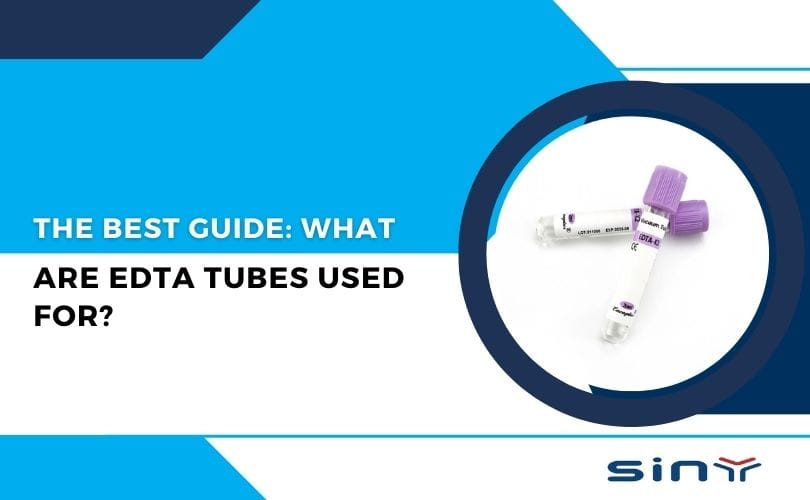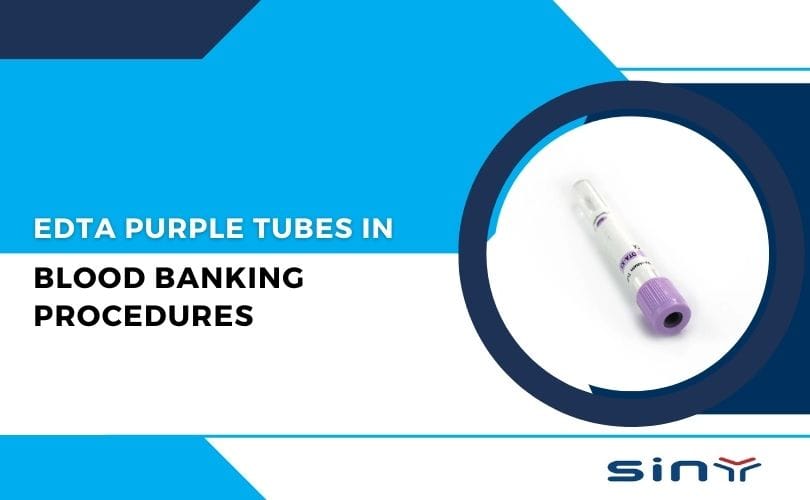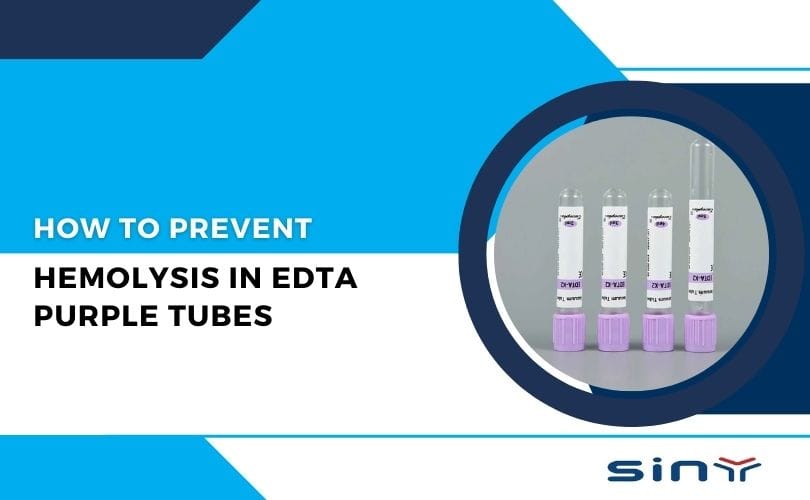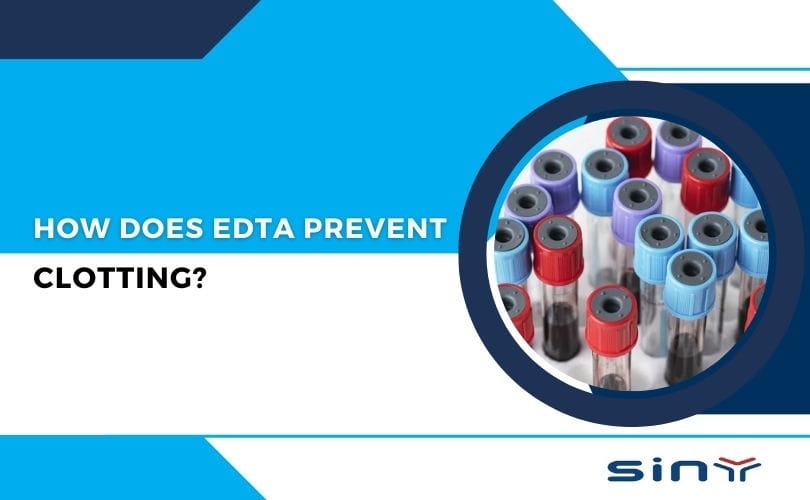In the medical laboratory world, blood sample accuracy is non-negotiable. Every test — from CBCs to biochemistry panels — depends heavily on how the sample was collected and preserved. Anticoagulants like K2 EDTA and Heparin prevent blood from clotting, ensuring reliable test results.
However, each tube type has unique properties, ideal uses, and limitations. Selecting the wrong one could lead to cell distortion, inaccurate readings, or even sample rejection.
So, let’s dive deep into the science, chemistry, and practical applications behind these two giants of the lab world: K2 EDTA vs Heparin Tubes.
What is K2 EDTA Tube?
K2 EDTA (Dipotassium Ethylenediaminetetraacetic Acid) is a strong anticoagulant used primarily in hematology. It works by chelating calcium ions (Ca²⁺) — which are necessary for the blood clotting process. Once calcium is bound, the clotting cascade stops, keeping the blood cells intact for analysis.
You can find high-quality K2 EDTA tubes including their EDTA Tubes for Blood Collection and the well-known Purple Top Blood Collection Tube.
Common Uses of K2 EDTA Tubes
Complete Blood Count (CBC)
Blood Smears and Morphology
HbA1c Testing
DNA/RNA Extraction
Since EDTA preserves the cellular structure exceptionally well, it’s the top choice for hematology and molecular diagnostics.
What is a Heparin Tube?
Heparin is another widely used anticoagulant that works differently. Rather than binding calcium, Heparin enhances the activity of antithrombin III, which inhibits thrombin and other clotting enzymes. This keeps plasma samples free from clots while maintaining biochemical stability.
For high-quality Heparin tubes, visit Siny Medical or explore their entire Heparin Tube category.
Common Uses of Heparin Tubes
Plasma Biochemistry
Hormone and Drug Assays
Blood Gas Analysis
Electrolyte Testing (Na⁺, K⁺, Cl⁻, etc.)
Heparin is especially useful for tests that require undistorted plasma and rapid turnaround, as it produces minimal interference in most biochemical reactions.
Chemical Composition and Mechanism of Action
| Property | K2 EDTA Tube | Heparin Tube |
|---|---|---|
| Chemical Formula | C₁₀H₁₄K₂N₂Na₂O₈ | Polysaccharide (Glycosaminoglycan) |
| Anticoagulant Action | Chelates Calcium Ions | Activates Antithrombin III |
| End Product | Whole Blood (Unclotted) | Plasma (Separated) |
| Additive Color | Purple (Lavender) Cap | Green Cap |
| Best For | Hematology Tests | Biochemistry Tests |
K2 EDTA is ideal for tests requiring cellular integrity, while Heparin is best for tests requiring plasma analysis.
Differences Between K2 EDTA and Heparin Tubes
Let’s take a close look at the major differences:
| Aspect | K2 EDTA Tube | Heparin Tube |
|---|---|---|
| Color Code | Purple/Lavender | Green |
| Mechanism | Binds Calcium | Inhibits Thrombin |
| Sample Type | Whole Blood | Plasma |
| Applications | CBC, ESR, HbA1c | Electrolyte, Enzyme, Hormone Tests |
| Storage Stability | Moderate | High |
| Interference in Tests | Can affect calcium and potassium | May interfere in PCR/DNA tests |
| Cost | Affordable | Slightly Expensive |
| Tube Material | PET/Glass | PET/Glass |
You can find both EDTA and Heparin blood collection tubes on Siny Medical’s Blood Collection Tubes page for more product specifications.
When Should You Use K2 EDTA vs Heparin Tubes?
Choose K2 EDTA When:
Performing CBC or hematology analysis
Preparing blood smears for morphology studies
Conducting genetic or molecular testing
Avoiding interference with plasma enzymes
Choose Heparin When:
Conducting biochemical or electrolyte tests
Requiring plasma separation quickly
Running hormonal or enzyme assays
Preparing blood gas samples
Advantages and Limitations
K2 EDTA Advantages:
Excellent preservation of cell morphology
Prevents platelet clumping
Ideal for automated hematology analyzers
Compatible with DNA/RNA analysis
Limitations:
Interferes with calcium, magnesium, and enzyme activity tests
Not suitable for plasma biochemistry
Heparin Tube Advantages:
Provides clean plasma samples quickly
Suitable for urgent tests
Minimal hemolysis
Great for biochemical and electrolyte analysis
Limitations:
Can interfere with PCR and molecular tests
Sometimes causes white blood cell clumping
Impact on Laboratory Results
K2 EDTA Tubes tend to maintain cell integrity for up to 24 hours if stored properly, while Heparin Tubes are better suited for plasma-based testing that needs quick turnaround.
If a biochemistry analyzer is used with EDTA plasma, you might notice false low calcium or magnesium readings because EDTA binds these ions.
Meanwhile, Heparin plasma can show slightly lower total protein levels, but it’s ideal for hormonal assays and electrolytes.
Product Availability and Manufacturers
You can source K2 EDTA Tubes from:
For Heparin Tubes, top sources include:
Both manufacturers are highly regarded for ISO-certified quality and clinical-grade tube production. For deeper product insight, visit their YouTube Channel @SinyMedical and their Made-in-China Profile.
Why Labs Prefer K2 EDTA Over Heparin in Hematology
The reason is simple: EDTA maintains the natural shape and count of cells, which is critical for diagnostic accuracy. In contrast, Heparin may cause cell clumping, making automated counts unreliable.
That’s why nearly all modern hematology labs rely on K2 EDTA tubes, especially those from edtatube.com, where product quality meets international standards.
Final Thoughts
Choosing between K2 EDTA and Heparin Tubes depends entirely on the type of test you’re conducting. If your work involves cell counts, morphology, or DNA, K2 EDTA is your best friend. But if you need clean plasma for biochemical assays, Heparin is the go-to choice.
For reliable, high-quality tubes, always source from trusted manufacturers like EDTA Tube and Siny Medical. Their precision-engineered tubes ensure your samples stay accurate and ready for testing.
FAQs
1. Can K2 EDTA and Heparin tubes be used interchangeably?
No. Each is designed for specific tests. Using the wrong one can distort results.
2. Why does EDTA interfere with calcium and magnesium tests?
Because it chelates calcium and magnesium ions, making them unavailable for measurement.
3. Which tube is best for electrolyte testing?
Heparin tubes (green top) are ideal for electrolyte and biochemical testing.
4. What color cap is used for K2 EDTA tubes?
Purple or lavender — these are the standard colors worldwide.
5. How long can EDTA blood samples be stored?
They’re stable for about 24–48 hours at 2–8°C before cellular degradation begins.







